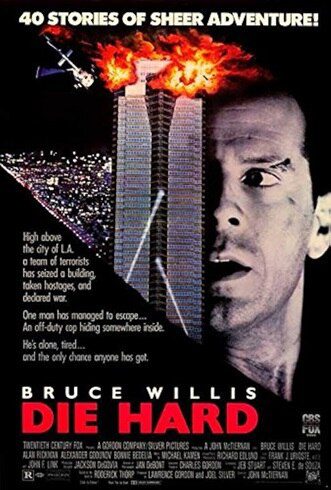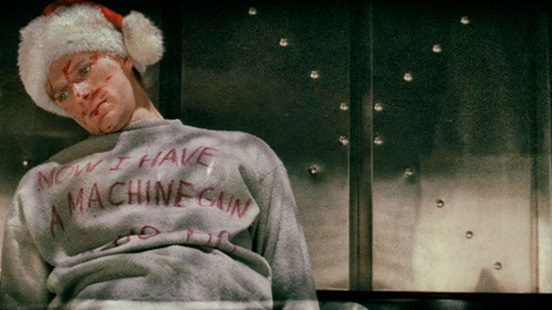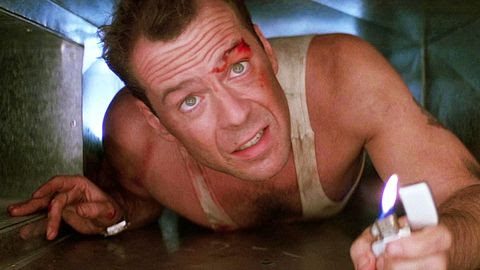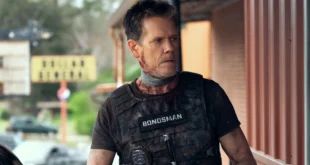John McTiernan’s Die Hard stands as a quintessential example of the action-thriller genre, weaving suspense and adrenaline-pumping sequences into a tightly knit narrative. The film’s thriller elements are deeply embedded in its characters, plot, and setting, creating a gripping experience that keeps audiences on the edge of their seats.
The Menace of Hans Gruber
One of the most striking features that infuses Die Hard with its thrilling essence is the menacing presence of Hans Gruber, portrayed by Alan Rickman. Gruber and his team of terrorists operate with a chilling casualness and a blatant disregard for human life, which elevates them from mere criminals to figures reminiscent of horror villains. Gruber’s icy demeanor and calculated brutality are epitomized in his ruthless executions of Joseph Takagi (James Shigeta) and Harry Ellis (Hart Bochner). These moments highlight the stakes and reinforce Gruber’s role as a formidable antagonist whose unpredictability and savagery heighten the film’s tension.

John McClane: The Semi-Reluctant Hero
Counterbalancing Gruber’s villainy is Bruce Willis’s portrayal of Detective John McClane, the brash, resourceful, and relentless hero of the story. McClane’s struggle against overwhelming odds and limited resources is a central component of the film’s thrilling nature. As he navigates through the Nakatomi Plaza, McClane faces numerous physical challenges, from crawling through ventilation shafts to surviving a series of explosive confrontations. His resilience and determination to save the hostages, including his estranged wife Holly (Bonnie Bedelia), inject the narrative with a relentless pace and high stakes.
The central plot of Die Hard revolves around Gruber’s elaborate scheme to steal $640 million in bearer bonds from Nakatomi Plaza. This plan places the building’s occupants, initially enjoying a festive Christmas party, in mortal danger. The transformation of a joyful celebration into a nightmarish hostage crisis exemplifies the film’s ability to subvert expectations and heighten suspense. The constant threat to the hostages’ lives adds a layer of urgency to McClane’s mission and keeps viewers engaged.
The Physical and Emotional Toll
Die Hard doesn’t shy away from depicting the physical and emotional toll on its protagonist. McClane’s journey is fraught with perilous stunts and brutal combat, emphasizing his vulnerability and humanity, and reminding us why shoes are often a good idea. The iconic scene where he maneuvers through the building’s elevator system, culminating in a massive explosion, showcases both the film’s action-packed nature and its capacity to thrill through high-stakes scenarios. These sequences are not merely spectacles; they serve to deepen the audience’s investment in McClane’s struggle and heighten the overall tension.
(Well, okay, they are spectacles that are a little extraneous, but who cares?!)

Subverting The Holiday Setting
Adding to the film’s unique thrill is its setting during a Christmas party, a time traditionally associated with joy and peace. The contrast between the festive backdrop and the violent events that unfold creates a jarring juxtaposition that enhances the film’s suspense. The initial scenes hint at a possible reconciliation between McClane and his wife, only for their hopes to be dashed by the ensuing chaos. This clever subversion of holiday cheer into a night of action-packed terror underscores the film’s innovative approach to the action thriller genre.
At times, Die Hard masterfully combines elements of action and thriller to create a film that remains compelling and suspenseful, pretty much from start to finish. That’s why critics and fans alike return to this film as a perennial classic, and the debate over whether it’s really a Christmas movie is its primary controversy.
Through its menacing villain, resilient hero, high-stakes plot, and inventive setting, the film exemplifies what makes the thriller genre so captivating. Die Hard not only entertains but also keeps audiences in a state of anticipation and excitement, solidifying its status as a popcorn-chomping classic in cinematic history.
 PopHorror Let's Get Scared
PopHorror Let's Get Scared




